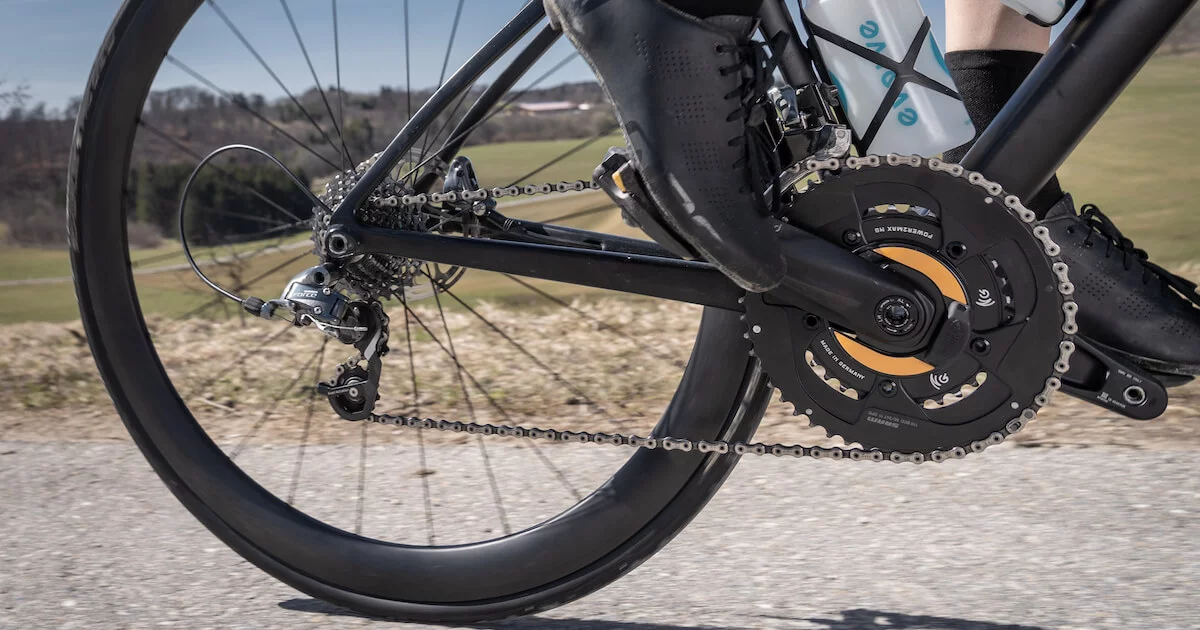Investing in a power meter enhances cycling by providing detailed data for optimizing training intensity, monitoring progress, and strategic racing, improving performance by up to 20%.
Enhancing Workout Precision
When you invest in a power meter for cycling, you’re equipping yourself with a tool that measures your actual output in watts in real time. This precise data is fundamental for training effectively because it shows exactly how much power you are exerting at any moment, unlike traditional methods that estimate exertion based on heart rate or speed.
Real-Time Feedback
Using a power meter allows you to see immediate feedback on your effort. This is invaluable during training sessions where maintaining specific power zones is crucial. For instance, if your goal is to stay at 250 watts during a climb, the power meter provides instant data, ensuring you’re not overexerting early or underperforming. Cyclists often adjust their effort by as little as 10 watts to stay within their target zone, optimizing endurance and strength gains.
Customizable Training Plans
With accurate power data, you can tailor your training plans more effectively. By analyzing your performance across different conditions and times, you can identify specific areas that need improvement. For example, if you consistently hit your power targets on flat terrains but fall short on hills, you might focus on hill-specific training sessions, increasing your power output gradually from 200 to 300 watts over several weeks.
Data-Driven Results
Athletes who use power meters often see measurable improvements in performance. For instance, after analyzing months of data, a cyclist might find that their average power output has increased from 180 watts to 230 watts, a clear indicator of enhanced fitness and efficiency. This type of quantitative progress is motivating and can be directly linked to the use of a power meter.
Enhanced Race-Day Strategy
During races, knowing your maximum sustainable power can be the difference between burning out and breaking through. Cyclists use their power meters to stay within a strategic power range, ensuring they have enough energy to finish strong. If you know you can maintain 300 watts for an hour, you’ll manage your efforts to stay close to that figure, preventing exhaustion and optimizing overall race performance.

Detailed Performance Insights
A power meter doesn’t just tell you how much power you’re producing; it provides a comprehensive view of your cycling dynamics. This device collects detailed data that can be broken down to analyze your efficiency, stamina, and technique. Here’s how a power meter can transform raw data into actionable insights that refine your cycling performance.
Tracking Efficiency Over Various Terrains
Power meters shine in their ability to provide specific insights across different terrains. Whether you’re climbing a steep incline or cruising on flat ground, the device records how power output varies. For instance, you may notice that your power efficiency decreases by 15% on inclines. This data prompts targeted training to improve muscular endurance and climbing technique, ensuring that your next ride up has improved efficiency metrics.
Analyzing Pedaling Technique
Power meters often come with a feature that analyzes your pedaling balance and smoothness. By examining the force exerted throughout each pedal stroke, you can pinpoint asymmetries—perhaps discovering that 60% of power comes from your right leg and only 40% from your left. This insight drives focused training to correct imbalances, enhancing overall pedaling efficiency.
Stamina Assessment Through Power Zones
By establishing power zones based on your maximum power output, a power meter helps in assessing stamina. If your data shows that you can sustain a high power zone for only a short period before fatigue sets in, it’s a clear indicator that your endurance needs boosting. Structured interval training might then be integrated into your workouts, gradually increasing the time spent in higher power zones from 5 minutes to 20 minutes over several training sessions.
Real-Time Fatigue Monitoring
During long rides or training sessions, a power meter can be crucial for monitoring signs of fatigue before they affect your performance. A noticeable drop in average power—from 250 watts to 200 watts over an hour—might signal fatigue setting in, prompting a strategic adjustment in pace or a reevaluation of nutrition and hydration strategies during the ride.
Optimal Training Intensity
Achieving the right training intensity is crucial for maximizing workout efficiency and improvement in cycling. A power meter provides the precision and flexibility needed to hit these optimal intensities during every session. Here’s how leveraging a power meter can revolutionize your training by ensuring you train at the ideal intensity for your goals and current fitness level.
Setting Personalized Power Zones
The first step to training effectively with a power meter is establishing your power zones. These are usually determined by a functional threshold power test (FTP), which calculates your highest sustainable power output over an hour. For instance, if your FTP is 300 watts, your training zones range from recovery (up to 55% of FTP) to neuromuscular power (over 150% of FTP). This allows you to target specific endurance and strength-building objectives with laser precision.
Tailored Interval Training
With your power zones defined, interval training becomes highly effective. Intervals are designed around varying durations and intensities within your power zones. For example, to improve aerobic capacity, you might perform intervals at 90-105% of your FTP for 10-minute periods, followed by recovery intervals at 50% for 5 minutes. This method ensures that every segment of your training is optimized to contribute to your overall performance goals.
Monitoring and Adjusting in Real-Time
One of the most significant advantages of using a power meter is the ability to monitor and adjust your effort in real-time. During a workout, if you’re pushing too hard or not enough, the power meter provides instant feedback, allowing you to adjust on the fly. This real-time adjustment ensures that you maintain the right intensity to maximize training benefits without overtraining or undertraining.
Analyzing Workout Effectiveness
After each session, the power meter generates detailed reports on your performance, including time spent in each power zone, total power output, and changes in performance over time. This data helps assess whether your current training intensity is effective or if adjustments are needed. For example, if you’re consistently underperforming in higher power zones, it might be time to focus more on high-intensity interval training.

Progress Monitoring
No cyclist can make significant progress without monitoring their development. A power meter is the only way to truly measure how different kinds of pedaling affect your performance over time. Here are several ways you can use your power meter to check in and ensure you are on the right track.
Initial Performance Measurement
Before you start monitoring your development, you should measure your current performance to be able to confront it with your future stats. Track all your workouts using the power meter to be able to measure such data in the future as peak power, speed or resistance. Contrarily, you can measure the initial measurable, which is Functional Threshold Power or the maximum amount of power you can sustain for up to an hour – let’s say it is 250 watts.
Setting Measurable Targets
The first step you should undertake is setting measurable targets for your future sprint achievements. Identify how much time and effort you may need to expend to increase it to the target number.
Monitoring Progress
Once all the measurables are set, it is time to start monitoring your progress. Firstly, one should perform a series of tests every month or two. These should include collecting data on how your body reacts to the maximum sprints. If the data reports only small improvements in this area, this means you should overemphasize short sprints during your weekly routine.
Strategic Racing
Using a power meter during races isn’t just about measuring how hard you’re pedaling; it’s about strategically managing your effort to achieve the best possible result. Here’s how a power meter becomes a crucial part of your racing strategy, providing real-time data that helps you optimize your performance on race day.
Pre-Race Planning
Before a race, analyze past performance data from your power meter to set strategic power targets. For instance, if your FTP is 300 watts, you might plan to maintain 90% of FTP (270 watts) on flat sections and up to 110% (330 watts) on critical climbs. This pre-race plan ensures you distribute your energy efficiently across the course, preventing early burnout.
Pacing During the Race
Effective pacing is critical in racing. A power meter provides live feedback, ensuring you stick to your pre-determined power targets. If you’re exceeding your target power on climbs, the power meter alerts you to ease off, preserving energy for later stages. Conversely, if you’re underperforming on flats, it signals the need to push harder to keep up with your race plan.
Adjusting to Race Dynamics
Races can be unpredictable, with varying terrain and competitive dynamics. A power meter helps you adapt your strategy in real-time. For example, if you find yourself in a breakaway, your power meter can guide you to maintain a sustainable wattage that maximizes your chances of staying ahead without exhausting your reserves too quickly.
Analyzing Performance Post-Race
After the race, dive into the power data to evaluate your performance against your plan. You might discover that your power output was lower than expected in the final kilometers, suggesting that better energy distribution could enhance your finish. This post-race analysis is crucial for refining future race strategies and training focuses.
Learning from Each Race
Every race provides a wealth of data that can be used to improve future performances. By continually analyzing how your power output correlates with race outcomes, you can adjust your strategies to better handle different racing scenarios. This ongoing learning process is what separates seasoned racers from the pack.





